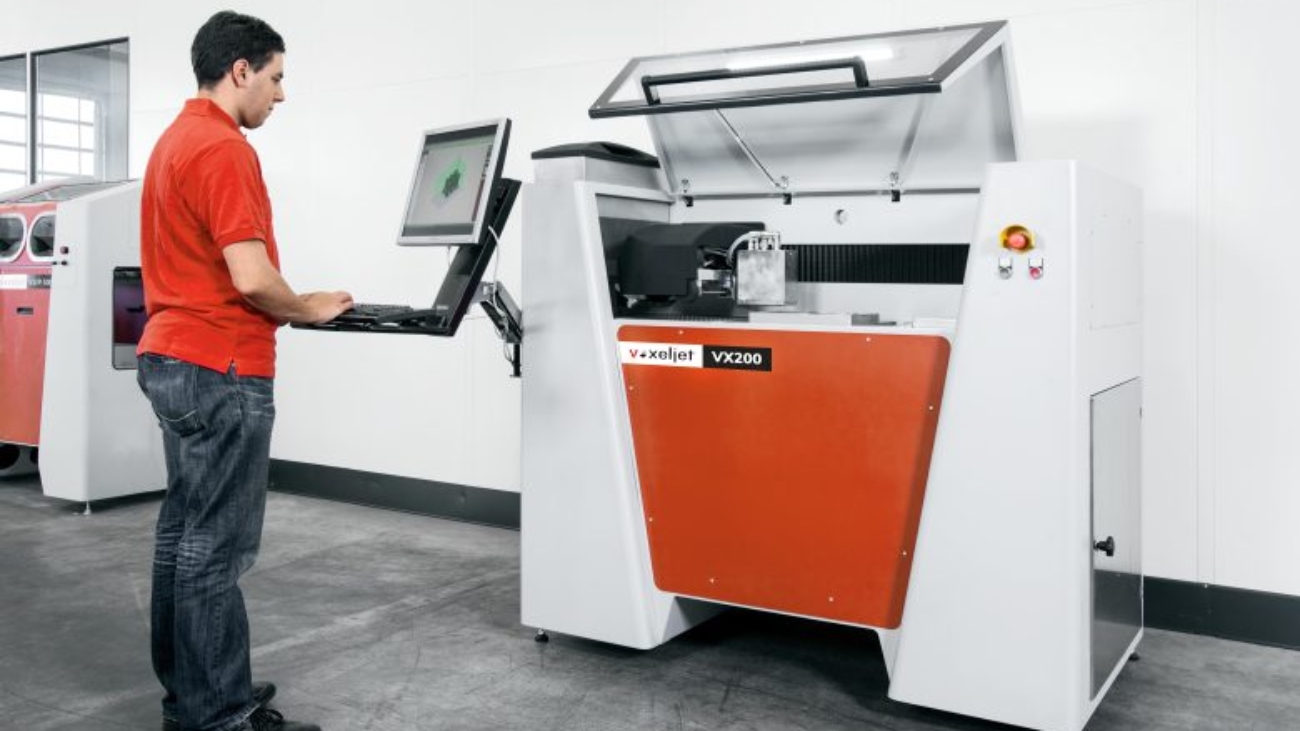In an initial proof of concept, voxeljet and ParaStruct GmbH have successfully tested the 3D printing of recyclable residual materials from the construction industry. For this purpose, voxeljet’s binder jetting 3D printing technology was used. The material tested was the Ecomould material set from Parastruct GmbH. This material set consists of biogenic production residues from the construction industry and a mineral binder, which was developed by the Austrian start-up.
Using binder jetting, Ecomould can be used to produce molded parts that are suitable for the cold casting of concrete and ceramics for interior design objects or laminating processes. The Ecomould material was tested on a VX200 from voxeljet – a 3D printing system specially developed for research and development purposes.
Parastruct GmbH is an Austrian company that offers a sustainable solution for recyclable mold making using their developed technology and Ecomould material set. The market for excess material recycling is expected to grow at an annual rate of 7-9% until 2025[1]. Increasing legal obligations and customer requirements as part of Corporate Social Responsibility (CSR) strategies are driving interest and demand for sustainable value-added solutions. Parastruct utilizes 3D printing to reintroduce unused mineral materials, such as production waste from the construction industry, and biogenic resources, such as wood flour or sawdust, back into the value creation process.
Manufacturing on Demand
Companies can make potential savings by eliminating disposal costs, which can be as high as €75-100/t for construction waste and €70-180/t for wood, and by reducing resource expenditures to optimize overall profitability. Ecomould can assist in achieving sustainability goals, particularly in light of stricter guidelines like the EU Green Deal. Ecomould has a significantly lower CO² footprint than conventionally manufactured sand-phenolic resin molds, emitting -108.3 kg CO² per 1m² of mold surface*.

Treated, but still rough surface of a 3D-printed part consisting of a mineral particle material (expanded clay sand) from Parastruct

Smooth, coated and sandblasted surface of a 3D printed part consisting of a mineral particle material (expanded clay sand)
Ecomould-produced molds can be shredded and reused as particle material in 3D printing. A plastic coating can be applied as a finish, which is removable at the end of its service life. This second use of Ecomould material reduces the carbon footprint even further.
voxeljet’s binder jetting 3D printing technology is ideal for processing Ecomould because voxeljet 3D printers are open-source systems whose printing parameters can be flexibly adapted to different material sets. Additionally, voxeljet offers a wide range of printers, currently in sizes up to 4 x 2 x 1 m, which promises easy scaling of the Ecomould results in larger, more productive 3D printers.
* Parastruct GmbH used the Impact Forecast Tool to determine and certify the carbon footprint.
You might also like:
3DXB Group awarded Guinness World Record for 3D printed villa: According to 3DXB, the entire structure of the villa is crafted from locally sourced concrete. The Emirati company also noted that it was committed to supporting the country’s goal of constructing 25% of buildings using 3D printing technology by 2030.
* This article is reprinted from 3D Printing Media Network. If you are involved in infringement, please contact us to delete it.
Author: Davide Sher


Leave A Comment